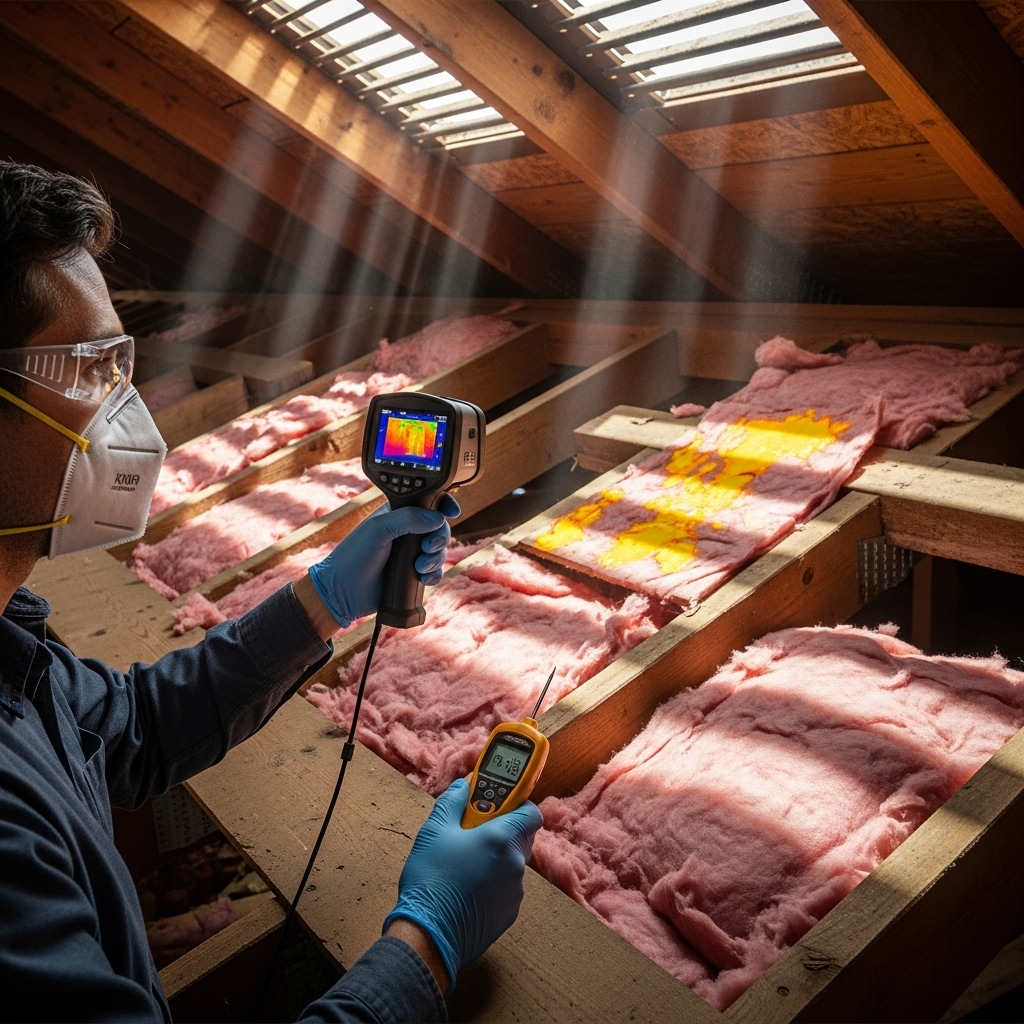Introduction
Sometimes mold problems persist even after careful cleaning and drying. When that happens, the cause is usually a subtle moisture pathway, an overlooked material, or a building science detail that keeps conditions favorable for growth. This advanced troubleshooting guide focuses on tricky scenarios common in New Jersey: attics with seasonal condensation, basements with intermittent seepage, crawl spaces above high water tables, and HVAC systems that redistribute musty air. You will learn how to diagnose and correct hidden sources, verify results, and decide when to bring in specialized support. Throughout, remember that even advanced mold removal still rests on core principles—source control, safe handling, HEPA cleaning, and controlled drying.
Approach these issues like a detective. Gather data, test hypotheses, and adjust. The more you measure and record, the faster you will identify the one or two key changes that break the cycle of recurring growth.
Building Science Refresher
Mold thrives where temperature, humidity, and food sources intersect. Air moves from high to low pressure and from warm to cool. In winter, warm interior air can leak into cold attics through recessed lights and gaps, depositing moisture on the underside of roof sheathing. In summer, hot humid air can infiltrate cool basements, condense on cold surfaces, and keep relative humidity high. Materials like paper-faced drywall, wood framing, dust, and fabrics provide the food. Your troubleshooting goal is to interrupt one or more of these pillars.
Attic Troubleshooting
Problem: Dark spotting on roof sheathing, especially near eaves. Cause: Warm, moist interior air leaking into a cold attic and condensing on sheathing during winter. Solutions: Air seal the ceiling plane—caulk gaps at top plates, seal penetrations for wiring and plumbing, and use airtight covers over recessed lights that are rated for insulation contact. Add baffles to keep soffit vents clear and balance intake and exhaust ventilation. Verify bath and kitchen exhaust ducts terminate outside, not in the attic. After cleaning, maintain airflow and insulation depth to reduce the temperature differential that drives condensation.
Tip: If discoloration persists after thorough cleaning and improved ventilation, look for disconnected ducts, blocked soffits due to insulation, or a whole-house fan that depressurizes the house and draws moist air upward.
Basement and Foundation Troubleshooting
Problem: Musty odor returns each summer despite dehumidification. Cause: Groundwater seepage during rain events and sustained high humidity maintaining damp surfaces. Solutions: Confirm exterior drainage—extend downspouts, correct negative grading, and consider French drains or sump systems where needed. Inside, run a correctly sized dehumidifier continuously in warm months and ensure doors remain open for circulation. Replace absorbent storage like cardboard with plastic bins and keep items off the floor.
Problem: Staining along baseboards after storms. Cause: Wind-driven rain entering around windows or through siding transitions. Solutions: Reseal exterior penetrations, repair flashing, and maintain weep paths. Inside, inspect the backside of baseboards for dampness and remove damaged drywall to allow drying before rebuilding.
Crawl Space Troubleshooting
Problem: Seasonal odors rise through the house. Cause: High water table and exposed soil elevate humidity; stack effect draws crawl space air upward. Solutions: Install an intact, sealed vapor barrier over soil, tape seams, and seal to piers and walls. Depending on design, either provide controlled mechanical drying or ensure balanced ventilation. Insulate ducts and cold water pipes to prevent condensation. Keep gutters clear to reduce perimeter wetting.
HVAC and Air Distribution
Problem: Cleaned rooms become musty when the AC runs. Cause: Dirty returns, leaky ducts in attics or crawl spaces, or low insulation on cold supply trunks causing condensation. Solutions: Clean returns, seal ducts with appropriate mastics or tapes, and insulate cold trunks. Replace filters regularly and keep furniture from blocking returns. In basements, avoid oversizing dehumidifiers or AC settings that overcool surfaces and raise relative humidity elsewhere.
Advanced tactic: Consider balancing airflow to reduce pressure differences that drive infiltration. Simple actions—like opening interior doors, using transfer grilles in tight bedrooms, and ensuring returns are not blocked—can stabilize humidity and odors.
Material-Specific Challenges
Issue: Persistent staining on unfinished wood despite cleaning. Approach: Confirm dryness with a moisture meter. If wood is dry and sound, light abrasion followed by HEPA vacuuming and a sealing primer may be acceptable in utility spaces. Do not encapsulate damp wood. If staining reappears, revisit moisture sources, especially air leaks and condensation.
Issue: Mold under vinyl flooring on concrete slabs. Approach: Vinyl can trap moisture against cool concrete. Remove damaged flooring, dry the slab, and evaluate whether a different finish or a vapor barrier system is appropriate. Maintain dehumidification during humid months.
Issue: Musty closets on exterior walls. Approach: Reduce contents to improve airflow, add a louvered door or discreet vents, and look for cold spots behind insulation gaps. Dehumidify the home and avoid storing cardboard or fabric directly against cold walls.
Moisture Measurement and Diagnostics
Use a hygrometer to log humidity in multiple rooms at different times of day. Compare basement, first floor, and second floor to spot patterns. Use a moisture meter to compare suspect materials to known dry areas. Thermal imaging (even with a smartphone accessory) can highlight cold spots where condensation or water intrusion is likely. Track weather conditions relative to indoor readings; recurring issues after nor’easters or heat waves point to exterior detailing or ventilation adjustments.
Containment and Cleaning Nuances
When tackling stubborn areas, containment quality becomes as important as cleaning technique. Use plastic sheeting to isolate work zones and maintain gentle negative pressure to capture airborne particulates. HEPA vacuum before and after any abrasion, and apply cleaning solutions to cloths to avoid overspray. Dry thoroughly with controlled airflow and a dehumidifier, documenting readings as you go.
When Recurrence Persists
If you have corrected obvious sources yet mold returns, consider less common pathways: humid air leaking through chimney chases, dryer vents disconnected in wall cavities, or seasonal condensation on bridging metal within wall assemblies. Evaluate ventilation rates; a home that is too tight without adequate exhaust can trap humidity, while one with unbalanced pressures can pull damp air from basements and crawl spaces.
Mid-Course Correction
After two to three weeks of adjustments and cleaning, evaluate. If odors remain strong or readings stay high, bring in targeted expertise for mold removal and building diagnostics. Professionals can perform pressure testing, smoke tracing for air leakage, and more sophisticated moisture mapping to confirm root causes.
Seasonal Strategies for New Jersey
- Spring: Inspect roofing after storms, test sump pumps, and address window leaks before heavy rains.
- Summer: Maintain dehumidification, insulate cold pipes, and monitor basement humidity daily during heat waves.
- Fall: Clear gutters and downspouts after leaf drop and check attic ventilation ahead of winter.
- Winter: Use bath and kitchen exhaust fans, manage indoor humidity to prevent window condensation, and monitor attics for frost on nails or sheathing.
Verification and Documentation
Success looks like clean surfaces, neutral odor, and stable humidity under 50% for at least a week. Wood moisture readings should align with baseline dry values from unaffected areas. Keep a log with dates, weather conditions, humidity, and actions taken. Documentation not only guides future maintenance but also proves the problem was handled thoroughly if you plan renovations or a real estate transaction.
FAQ
Q: Why does mold come back after I clean it? A: The moisture source is still active—often hidden condensation or infiltration. Identify and interrupt the path, then clean and dry again.
Q: Do I need professional testing? A: Not always. In advanced cases, diagnostics like pressure testing or thermal imaging help pinpoint causes. Testing is a tool—not a substitute for fixing moisture.
Q: Can I seal wood to “lock in” stains? A: Only after confirming the wood is dry and clean. Sealing damp or dirty surfaces traps problems and may worsen odors.
Q: What humidity should I target? A: 30%–50% indoors. In New Jersey summers, expect to run a dehumidifier steadily, especially in basements and crawl spaces.
Q: How do I prevent attic mold in winter? A: Air seal the ceiling plane, ensure balanced ventilation, and verify that exhaust fans duct outside. Adequate insulation reduces cold surfaces that attract condensation.
Take the Next Step
Advanced problems demand a deliberate approach: measure, test, adjust, and verify. When you want additional horsepower—better containment, stronger filtration, and expert diagnostics—partner with specialized teams for professional mold removal. With the right plan and support, your New Jersey home can stay dry, clean, and comfortable across every season.

